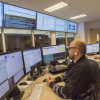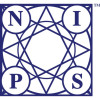News
Creating a World of Make-Believe to Better Understand the Real Universe
Using supercomputers at NERSC, scientists in the Dark Energy Spectroscopic Instrument collaboration are creating simulated universes– complete with dark matter mock-ups, computer-generated galaxies, quasi quasars, and pseudo supernovae – to better understand real-world observations. Read More »
Beta of Neurodata Without Borders Software Now Available
Neuroscientists can now explore a beta version of the new Neurodata Without Borders: Neurophysiology (NWB:N 2.0) software and offer input to developers before it is fully released next year. Read More »
ESnet’s Petascale DTN Project Speeds up Data Transfers between Leading HPC Centers
A new Petascale Data Transfer Node project aims to to achieve regular disk-to-disk, end-to-end transfer rates of one petabyte per week between major supercomputing facilities, which translates to achievable throughput rates of about 15 Gbps on real world science data sets. Read More »
Berkeley Lab Scientists to Lead, Support 12 New SciDAC Projects
When the Department of Energy announced the series of projects under the latest Scientific Discovery through Advanced Computing (SciDAC) program in late 2017, Berkeley Lab scientists, mathematicians and computer scientists were listed as key contributors in two institutes and 10 science application partnerships. Read More »
Heavy Metal: How First Supernovae Altered Early Star Formation
An international team of researchers ran multi-scale, multi-physics 2D and 3D simulations at NERSC to illustrate how heavy metals expelled from exploding supernovae held the first stars in the universe regulate subsequent star formation and influence the appearance of galaxies in the process. Read More »
Berkeley Lab Projects Advance Running, Scheduling of Scientific Workflows on HPC Systems
Researchers are increasingly turning to high performance computing (HPC) systems to carry out scientific workflows, which are executed as a series of steps and programs to study complex problems. However, achieving this can require a number of time-consuming manual tasks by the user and doesn’t always make the most efficient use of the system. Recently, researchers at the Department of Energy’s (DOE) Lawrence Berkeley National Laboratory (Berkeley Lab) released publicly available software… Read More »
Berkeley Lab Staff to Participate in Major Machine Learning Conference
Berkeley Lab’s growing involvement in deep learning research and development will be evident next week when several staff members present papers and posters for the first time at the 2017 Conference on Neural Information Processing Systems. Read More »
CS Staff Honored with Director's Awards for Service and Outreach
Jon Bashor, Daniela Ushizima and Mariam Kiran were honored at the Berkeley Lab Director’s Awards for Exceptional Achievement ceremony on November 30. Read More »
High-Performance Computing Cuts Particle Collision Data Prep Time
A new approach to raw data reconstruction has potential to turn particle tracks into physics discoveries faster. And, Brookhaven National Laboratory researchers recently proved the concept with help from NERSC supercomputers & ESnet's high-speed network. Read More »
NERSC Resources Help Predict New Material for High-Power, High-Efficiency LEDs
Using predictive atomistic calculations and high-performance supercomputers at NERSC, University of Michigan researchers found that incorporating the element boron into the widely used InGaN (indium-gallium nitride) material can keep electrons from becoming too crowded in LEDs, making the material more efficient at producing light. Read More »







 Instagram
Instagram YouTube
YouTube








